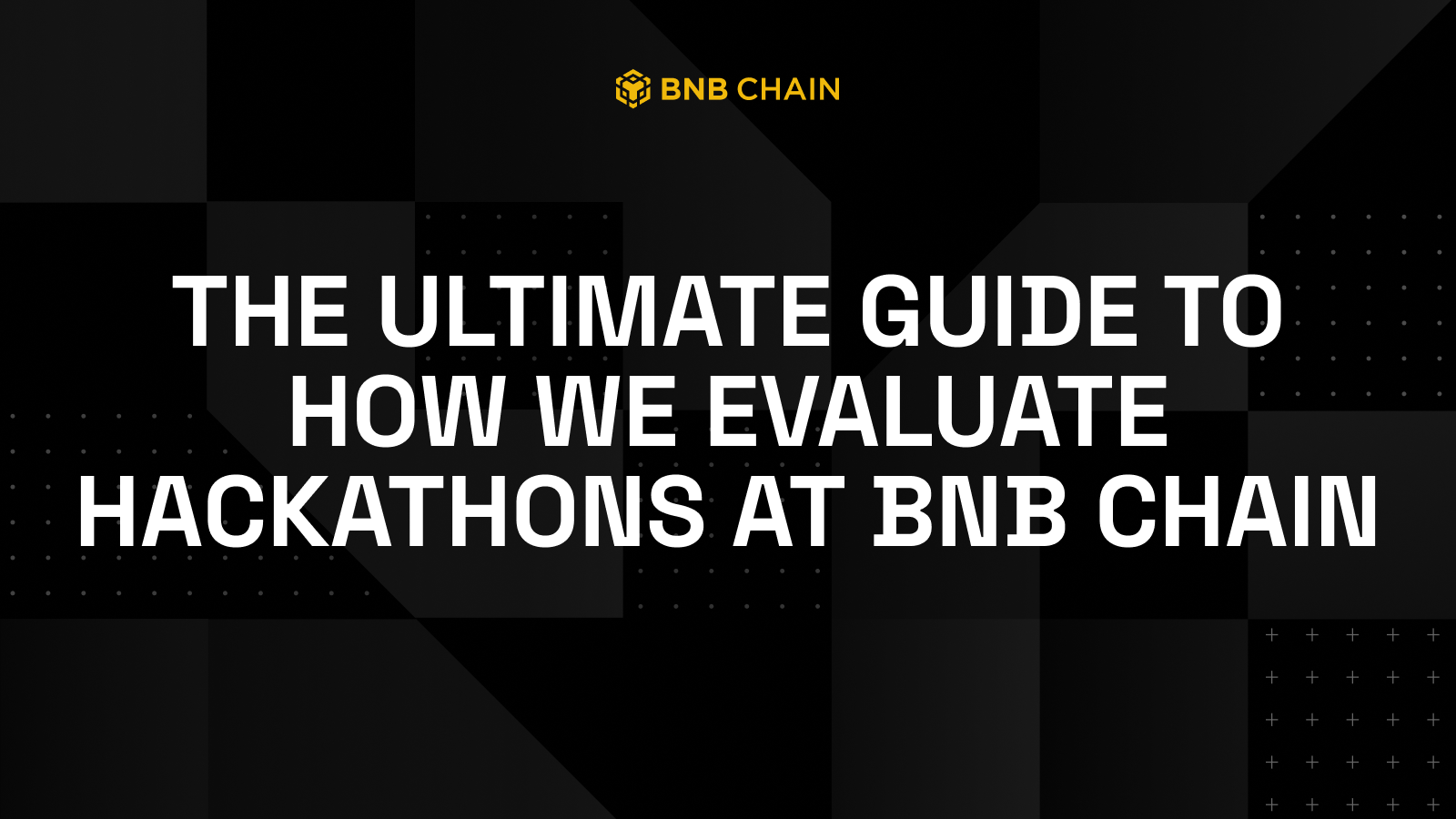TL;DR
To stand out in a BNB Chain hackathon:
- Build something users can actually use, not just demo.
- Keep your repo public, clean, and well-documented.
- Deploy and integrate with BNB Chain tools like opBNB, Greenfield, or BEP tokens.
- Show originality in your idea and a plan for what comes next.
This guide breaks down how each of those areas is judged and what winning teams get right.
Why Hackathon Evaluation Matters
Hackathons on BNB Chain aren’t just about building something fast. They’re about building something that lasts.
They give developers and teams a space to test ideas, collaborate, and bring new on-chain solutions to life. But winning takes more than clean code. It’s about solving real problems, aligning with the BNB Chain ecosystem, and showing your ability to execute long-term.
That’s why our evaluation looks deeper than the demo. We assess usability, scalability, integration, and how your project contributes to the broader BNB Chain vision of open innovation.
What We Evaluate
BNB Chain’s judging framework is built around five pillars that define great Web3 projects:
1. Design & Usability
How your project feels and functions for users.
Criterion | What We Look For | Good Example (High Score) | Needs Improvement (Low Score) |
|---|
User Journey Documentation | Clear user flow diagrams in .md files (Mermaid / PlantUML) | Full flow chart showing interactions and improved UX vs existing tools | Missing or unclear user journey |
System Architecture | Diagrams showing system components and interactions | Complete, labeled architecture with modules & data flow | Partial or missing diagram |
Textual Description | Accompanying explanation in .pdf or .md | Explains both process and design decisions | Generic or missing explanation |
2. Technical Implementation & Code Quality
Your code should reflect best practices: clean, modular, and deployable.
Criterion | What We Look For | Good Example (High Score) | Needs Improvement (Low Score) |
|---|
Open Source Availability | Public GitHub repo with proper license | Repository public and actively maintained | Private or missing |
License File | Open-source license (MIT, Apache 2.0, GPL) | Clearly declared in LICENSE file | Missing or custom restrictive license |
Dependencies Section | Credits and open-source dependencies listed | Includes all dependencies in .md | Omitted or incomplete |
Fork Enabled | Repo allows forking | “Fork” button active | Disabled |
Repository Organization | Clear modular folder structure | src/, docs/, scripts/ folders organized | Flat or disordered repo |
Code Quality & Readability | Naming, indentation, comments, linting | Clean, readable, follows style guide | Inconsistent or uncommented |
Deployability (Dockerization) | docker-compose.yml launches full system | All services start with one command | Broken or partial setup |
Environment Config Safety | .env.example used, no hardcoded secrets | Secrets externalized | Keys visible in source |
3. BNB Chain Integration & Ecosystem Fit
How your project connects to and strengthens the BNB Chain ecosystem.
Criterion | What We Look For | Good Example (High Score) | Needs Improvement (Low Score) |
|---|
On-Chain Deployment Evidence | Verified smart contract on BscScan | Deployed & verified with link | Not deployed or irrelevant |
Smart Contract Integration | BNB SDK / ethers.js / web3.js usage | Functional BNB SDK integration | No on-chain logic |
Ecosystem Composability | Integration with Greenfield, opBNB, BEP tokens | Demonstrated interaction | Only mentioned conceptually |
Ecosystem Value Proposition | How project strengthens BNB Chain | Clear, ecosystem-aligned use case | Generic or unrelated |
4. Innovation & Creativity
What makes your idea stand out.
Criterion | What We Look For | Good Example (High Score) | Needs Improvement (Low Score) |
|---|
Problem–Solution Clarity | Defined user problem and solution | Specific, data-supported problem framing | Vague or unclear challenge |
Technical Novelty | Innovative algorithms or architecture | Unique or first-of-its-kind approach | Rehash of existing tech |
Use of Emerging Tech | Creative use of AI, L2, modular design | Demonstrated integration | Surface-level mention |
5. Sustainability & Market Potential
How your project can grow beyond the hackathon.
Criterion | What We Look For | Good Example (High Score) | Needs Improvement (Low Score) |
|---|
Target User & Market Fit | Realistic audience & market timing | Addresses real, current pain point | Idea too early or unrealistic infra |
Business / Token Model | Revenue or token utility | Logical token economics & incentives | No clear monetization plan |
Adoption & Growth Plan | Strategy for users, partners, or community | Credible roadmap and partnerships | Missing or vague go-to-market |
Roadmap / Future Development | Planned next steps | Detailed milestones & deliverables | Missing or generic statement |
What We’re Looking For in Winning Projects
Winning teams at BNB Chain stand out because they:
- Build for users, not just judges.
- Write clean, transparent, open-source code.
- Integrate meaningfully with BNB Chain infrastructure.
- Bring fresh ideas or new technical approaches.
- Have a roadmap that extends beyond the hackathon.
- BNB Chain hackathons are launchpads, not finish lines.
Every submission we evaluate contributes to a larger goal: a more open, scalable, and community-driven Web3.
If you’re building on BNB Chain, focus on clarity, execution, and contribution. That’s how you go from hacker to builder, and from idea to impact.
